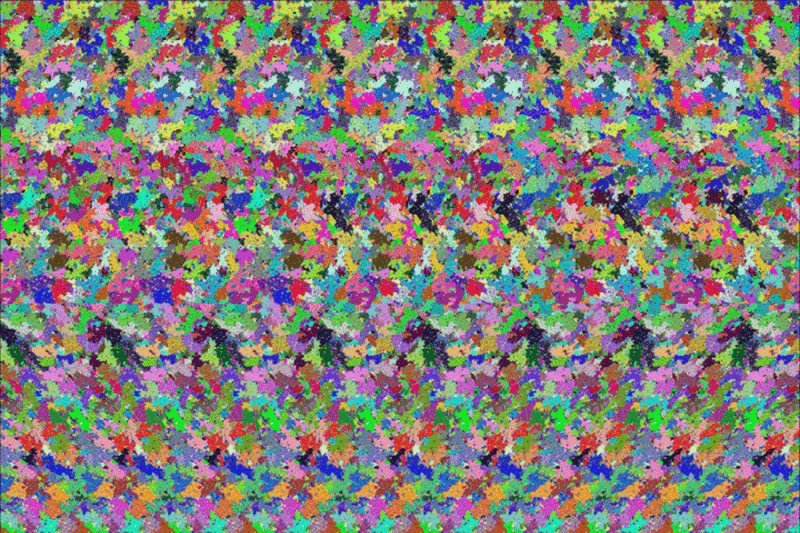
|
Credit & Copyright: E. Winfree,
K. Fleischer, A. Barr et al.
(Caltech)
Explanation:
Is this picture worth a thousand words?
According to the Holographic Principle, the most
information you can get from this image is about
3 x 1065 bits for a normal sized computer monitor.
The Holographic Principle, yet unproven, states that
there is a maximum amount of information content
held by regions adjacent to any surface.
Therefore, counter-intuitively, the information content
inside a room depends not on the volume of the room but
on the area of the bounding walls.
The principle derives from the idea that the
Planck length, the length scale where
quantum mechanics begins to dominate
classical gravity, is one side of an area
that can hold only about one bit of information.
The limit was first postulated by physicist
Gerard 't Hooft in 1993.
It can arise from generalizations from seemingly
distant speculation that the information held by a
black hole is determined not by its
enclosed volume but by the surface area of its
event horizon.
The term "holographic" arises from a
hologram analogy where three-dimension images are
created by projecting light though a flat screen.
Beware, other people looking at the
above image may not claim to see 3 x 1065 bits --
they might claim to
see a
teapot.
|
January February March April May June July August September October November December |
| ||||||||||||||||||||||||||||||||||||||||||||||||
NASA Web Site Statements, Warnings, and Disclaimers
NASA Official: Jay Norris. Specific rights apply.
A service of: LHEA at NASA / GSFC
& Michigan Tech. U.
Based on Astronomy Picture
Of the Day
Publications with keywords: Holographic principle - black hole
Publications with words: Holographic principle - black hole
See also:
- APOD: 2025 September 24 Á GW250114: Rotating Black Holes Collide
- APOD: 2025 May 9 Á IXPE Explores a Black Hole Jet
- APOD: 2025 May 6 Á The Doubly Warped World of Binary Black Holes
- APOD: 2025 May 4 Á Spin up of a Supermassive Black Hole
- APOD: 2024 November 24 Á Journey to the Center of the Galaxy
- APOD: 2024 October 1 Á Porphyrion: The Longest Known Black Hole Jets
- APOD: 2024 June 16 Á Animation: Black Hole Destroys Star
